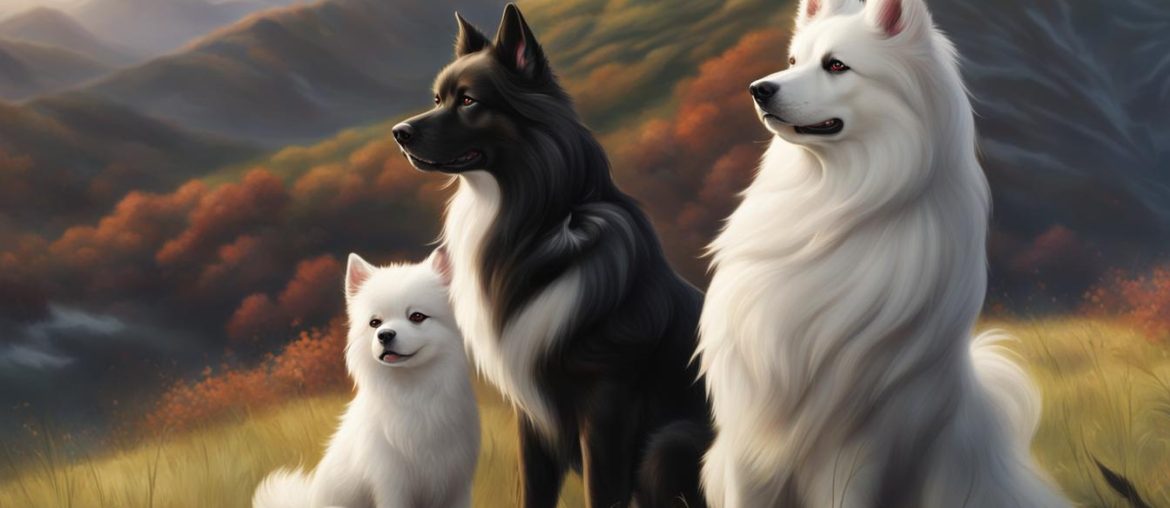Korea is home to a variety of unique and fascinating dog breeds. While the Jindo dog is the most well-known, there are several other native Korean breeds that deserve recognition. Despite the country’s history of dog meat consumption, there is a growing trend of Koreans embracing dogs as companions. This article will introduce you to the top 7 Korean dog breeds and their characteristics.
Key Takeaways:
- There are several native Korean dog breeds besides the Jindo dog.
- Koreans are increasingly adopting dogs as companions.
- Learn about the characteristics and history of the top 7 Korean dog breeds.
- Korean dog breeds have cultural significance and are worth exploring.
- Preservation efforts are being made to protect these unique breeds.
All Korean Dog Breeds
Korea is home to a diverse range of native dog breeds, each with its own unique characteristics and history. Whether you’re interested in popular breeds or rare ones, there are many options to consider when looking for a Korean dog breed to adopt. From loyal and intelligent Jindo dogs to majestic Korean Mastiffs, here is a comprehensive list of all the native Korean dog breeds:
| Breed | Size | Temperament | Coat |
|---|---|---|---|
| Jindo | Medium to large | Loyal, intelligent, independent | Double coat, dense and coarse |
| Korean Mastiff (Dosa) | Large to giant | Gentle, calm, friendly | Short and smooth |
| Sapsali | Medium | Docile, patient, loving | Long and shaggy |
| Jeju Dog | Large | Alert, loyal, wary of strangers | Short and thick |
| Nureongi | Medium | Calm, friendly, sociable | Short with yellow patches |
| Donggyeongi | Small | Wary, alert, agile | Short and thick |
| Pungsan Dog | Medium | Alert, intelligent, loyal | Thick and fluffy |
Each of these breeds has its own unique qualities and characteristics that make them special. Whether you’re looking for a companion, a guard dog, or a hunting partner, there is a Korean dog breed that can suit your needs. Some of these breeds, like the Jindo and Korean Mastiff, are more well-known and easier to find, while others, like the Jeju Dog and Donggyeongi, are rarer and harder to come by.
If you’re considering adopting a Korean dog breed, it’s important to research each breed’s specific needs and requirements. Some breeds may require more exercise, grooming, or training than others. Additionally, while many of these breeds are suitable for families, it’s essential to consider factors like size, temperament, and compatibility with children or other pets before making a decision.
Korean Mastiff (Dosa)

The Korean Mastiff, also known as the Dosa, is the largest dog breed native to Korea. With an impressive weight of up to 185 lbs, these dogs have a commanding presence. Despite their imposing size, Korean Mastiffs are known for their friendly and calm temperament, making them well-suited for companionship and show purposes.
Their coat is short and smooth, and they come in various colors, including reddish mahogany and deep brown chocolate. With their sturdy build and noble appearance, Korean Mastiffs are a sight to behold. The origin of this breed is unclear, but it is believed that they were developed through crossbreeding with European working dog breeds.
“The Korean Mastiff, also known as the Dosa, is a majestic breed that combines size, strength, and a gentle nature. It is fascinating to see how these dogs have adapted to the Korean climate and embraced their role as loyal companions.” – Dog Breed Expert
Characteristics of Korean Mastiffs:
- Large size, weighing up to 185 lbs
- Friendly and calm temperament
- Short and smooth coat in various colors
- Believed to have European working dog lineage
| Characteristics | Description |
|---|---|
| Size | Large, weighing up to 185 lbs |
| Temperament | Friendly and calm |
| Coat | Short and smooth |
| Colors | Reddish mahogany, deep brown chocolate |
| Lineage | Believed to have European working dog influence |
The Korean Mastiff, or Dosa, is a remarkable breed that perfectly combines strength and gentleness. Their impressive size, calm temperament, and stunning appearance make them a true treasure of Korea’s native dog breeds.
Sapsali

The Sapsali is a native Korean dog breed known for its unique appearance and rich history. These medium-sized dogs have a long and shaggy coat that resembles a lion cub, making them quite striking in appearance. The Sapsali’s coat can come in a variety of colors, including black, white, gray, and brown.
The Sapsali was once considered a royal breed in Korea and was exclusively kept by kings and nobles. However, over time, they have become more widely available and have gained popularity as family pets. These dogs are known for their docile and patient nature, making them excellent companions for individuals and families alike.
The Sapsali’s significance in Korean culture is so great that it has been declared a National Treasure of the country. This recognition underscores the breed’s historical and cultural importance. Despite their regal heritage, Sapsalis are known for being gentle and loving, making them perfect for households with children.
Characteristics of the Sapsali:
- Medium-sized dog breed
- Long and shaggy coat with various color options
- Docile and patient temperament
- Regarded as a National Treasure in Korea
- Excellent family pets
The Sapsali is a living testament to Korea’s rich dog breed heritage. Through their unique appearance and gentle nature, they continue to captivate dog lovers around the world. Whether you’re seeking a loyal companion or an intriguing piece of Korean culture, the Sapsali is undoubtedly a breed worth considering.
Nureongi: A Landrace Breed Native to Korea
The Nureongi, also known as the Korean Yellow Spitz, is a unique and versatile landrace breed that is native to Korea. Despite its historical popularity for consumption, the Nureongi is now gaining recognition as a calm, friendly, and sociable companion. This breed is smaller in size compared to the well-known Jindo dog, but it shares similar physical characteristics and a loyal and brave disposition.
The Nureongi’s short coat is adorned with patches of yellow and is known for its distinct melanistic mask. These dogs are adaptable to various living environments and have a moderate energy level, making them suitable for families and individuals alike. While their hunting instincts may still be present, proper socialization and training can help channel their natural tendencies in a positive way.
| Characteristics | Facts |
|---|---|
| Size | Medium |
| Weight | Average of 35-50 pounds |
| Coat | Short with patches of yellow |
| Temperament | Calm, friendly, sociable |
| Energy Level | Moderate |
| Lifespan | Average of 12-14 years |
The Nureongi is a breed that has faced challenges in the past due to its association with dog meat consumption. However, with increasing awareness and efforts to end this practice, the Nureongi is now being appreciated for its positive qualities and potential as a loving family pet. As the demand for these dogs as companions grows, it is crucial to support responsible breeding and adoption practices to ensure the well-being and preservation of this unique breed.
Korean Jindo Dog: A National Treasure
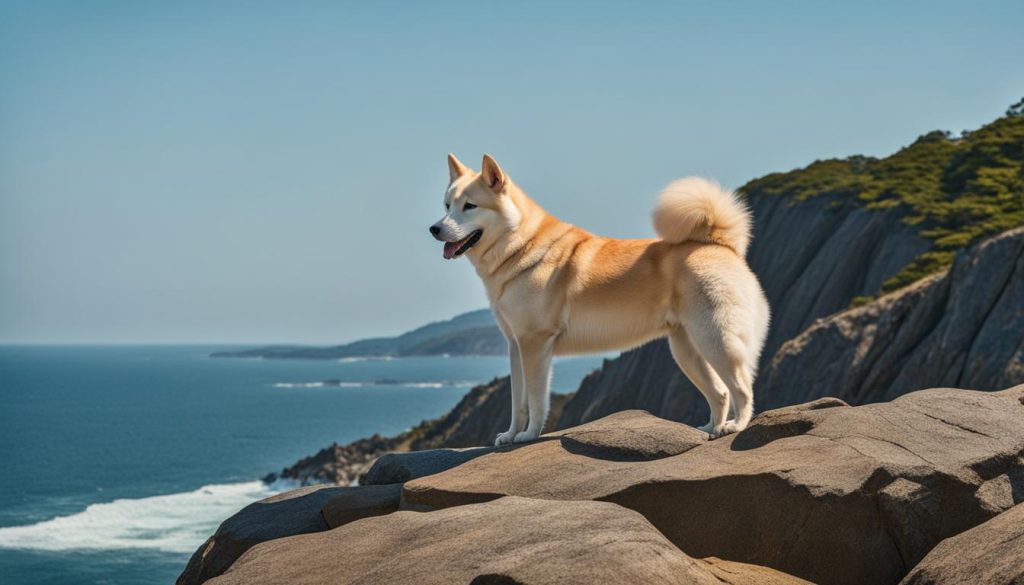
The Korean Jindo dog, also known as the Jindo Gae, is a beloved and iconic breed that holds a special place in Korean culture and history. This medium-sized spitz-type dog is named after the Jindo Island, its place of origin. With its stunning beauty, unwavering loyalty, and remarkable intelligence, the Jindo dog has captured the hearts of many dog enthusiasts around the world.
Renowned for its hunting prowess, the Jindo dog is an exceptional tracker and has a strong prey drive. Originally bred to hunt boar and other game, the breed possesses incredible agility, speed, and endurance. Its keen senses and independent nature make it an excellent guardian of its family and property.
The Jindo dog’s history is deeply intertwined with the people of Korea. It is even recognized as a Natural Monument by the Korean government. This breed has been bestowed with such importance due to its cultural significance and role in Korean folklore and mythology. Legend has it that these dogs possess mystical powers and can navigate their way back home from great distances, which has earned them the nickname “The Korean Houdini.”
Jindo Dog Characteristics:
- Appearance: The Jindo dog has a well-muscled body, a thick double coat, and a bushy tail that curls over its back.
- Temperament: Known for their loyalty, intelligence, and independence, Jindo dogs form strong bonds with their owners but can be aloof with strangers.
- Trainability: Jindo dogs are highly intelligent, but they can be strong-willed and require consistent and patient training.
- Exercise Needs: This breed is active and energetic, requiring regular exercise to keep both their minds and bodies stimulated.
- Socialization: Proper socialization from a young age is crucial for Jindo dogs to ensure they get along well with other animals and people.
The Jindo dog’s unique combination of beauty, loyalty, and hunting instincts has made it a beloved breed in Korea and gained popularity worldwide. As a result, efforts are being made to preserve and protect the Jindo dog’s genetic purity and promote responsible ownership. Whether as a cherished companion or a working dog, the Jindo dog continues to captivate dog lovers with its extraordinary skills and unwavering devotion.
Pungsan Dog
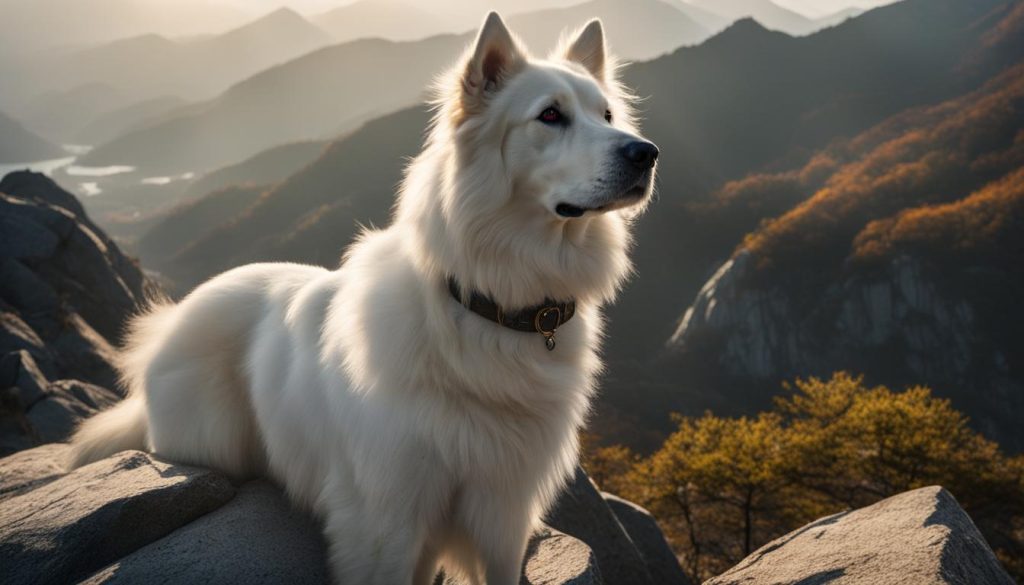
The Pungsan Dog is a fascinating breed native to Korea. With its fluffy appearance and intelligent nature, this Spitz-like dog has captured the hearts of many. Highly valued in North Korea and rare to find outside the country, the Pungsan Dog is a true gem of Korean canine heritage.
The Pungsan Dog is slightly larger than the famous Jindo Dog and is known for its square-shaped body and muscled form. These dogs weigh around 40-55 pounds, making them a medium-sized breed. Their fluffy coat adds to their charm, and their alert and intelligent nature make them excellent hunting and companion dogs.
Unfortunately, due to their rarity, detailed information about the Pungsan Dog is limited. However, their unique appearance and historical significance in Korea make them a breed worth exploring and learning about. Whether you’re interested in their hunting abilities or simply appreciate their beauty, the Pungsan Dog stands out among Korean dog breeds.
| Characteristics | Description |
|---|---|
| Size | Medium-sized breed, weighing around 40-55 pounds |
| Appearance | Fluffy coat, square-shaped body, muscled form |
| Nature | Alert, intelligent, and excellent hunting abilities |
| Popularity | Rare to find outside of Korea, highly valued in North Korea |
Overall, the Pungsan Dog is a remarkable breed that showcases the rich diversity of Korean dog breeds. Its distinctive appearance, intelligence, and historical significance make it a breed that should be celebrated and preserved.
Donggyeongi Dog
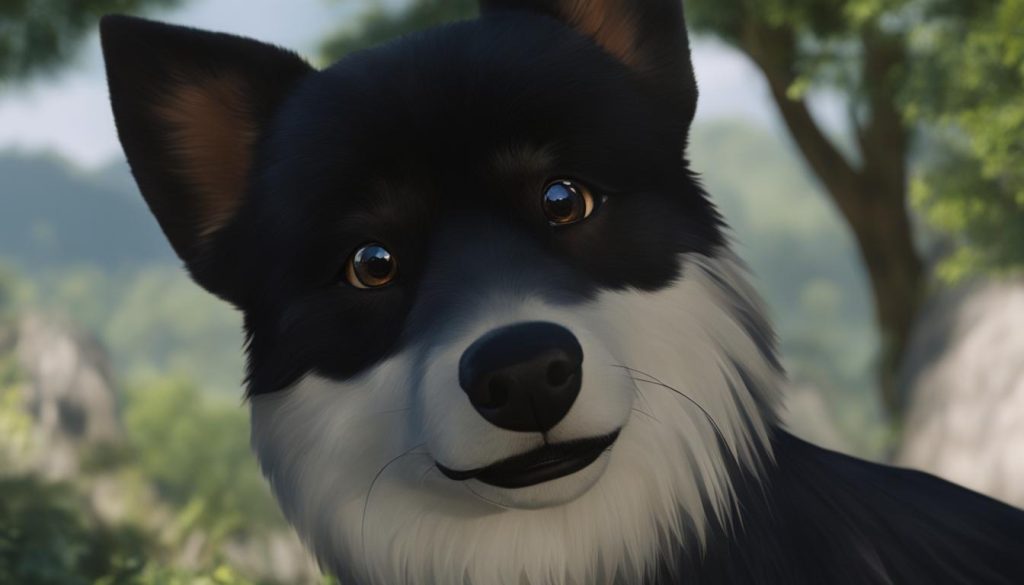
The Donggyeongi is a unique and protected Korean dog breed known for its distinctive short-bobbed tail. These dogs have a small but muscular body, making them agile and efficient hunters. They have a wary and alert nature, making them excellent guard dogs as well. While they can be challenging to train in a household setting, they are deeply rooted in Korean history and hold cultural significance.
Originating from Korea, the Donggyeongi dog breed faced near extinction during the Japanese colonial period. However, efforts were made to preserve this valuable breed, and it is now recognized as an important part of Korea’s heritage. The Donggyeongi has a unique appearance with its short tail, and its small size makes it easy to manage.
Although they may not be as well-known as some other Korean dog breeds, the Donggyeongi is highly regarded for its hunting abilities, agility, and alertness. They excel in tasks that require quickness and adaptability. Despite their history and unique characteristics, Donggyeongi dogs are relatively rare, making them a prized find for those passionate about Korean dog breeds.
Characteristics of the Donggyeongi Dog
The Donggyeongi dog has several distinct characteristics that set it apart from other breeds:
- Short-bobbed tail: The Donggyeongi’s tail is naturally short and straight, giving them a unique and adorable appearance.
- Alert and wary nature: Donggyeongi dogs are naturally cautious and alert, making them excellent watch dogs.
- Small but muscular body: Despite their small size, Donggyeongi dogs are muscular and agile, allowing them to excel in hunting and navigating challenging terrains.
- Deeply rooted in Korean history: The Donggyeongi’s history dates back to ancient Korea, and they have played a significant role in the country’s culture and traditions.
| Characteristic | Description |
|---|---|
| Short-bobbed tail | The Donggyeongi’s tail is naturally short and straight, which sets it apart from other dog breeds. |
| Alert and wary nature | Donggyeongi dogs are naturally cautious and alert, making them excellent watch dogs. |
| Small but muscular body | Despite their small size, Donggyeongi dogs are muscular and agile, allowing them to excel in hunting and navigating challenging terrains. |
| Deeply rooted in Korean history | The Donggyeongi’s history dates back to ancient Korea, and they have played a significant role in the country’s culture and traditions. |
Jeju Dog
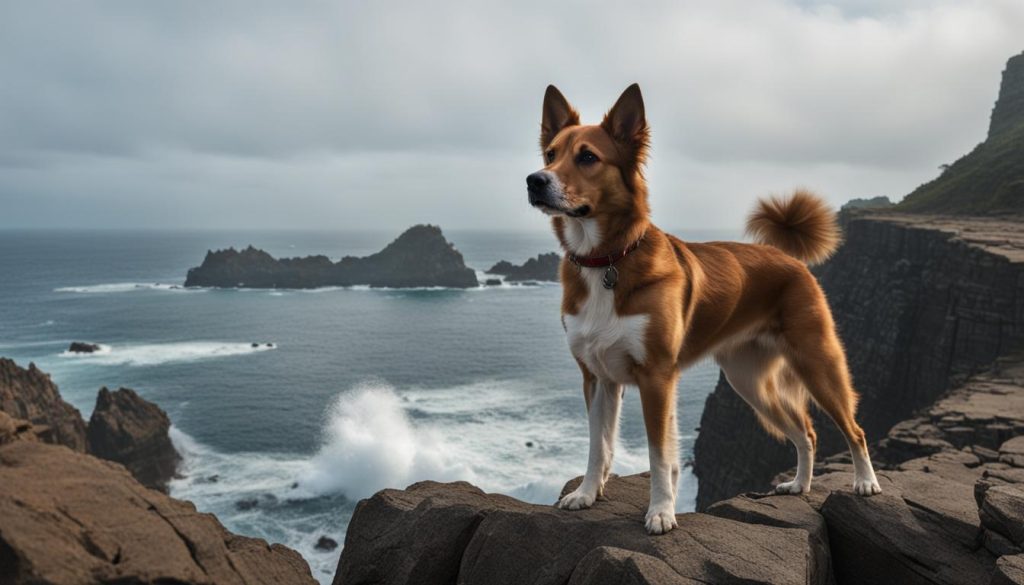
Let’s now turn our attention to the Jeju dog, a rare and unique breed native to Korea. These dogs are known for their striking resemblance to wolves, with their strong build and alert features.
The Jeju dog is one of the largest Korean dog breeds and is highly valued for its loyalty and guarding abilities. They are wary of strangers and have a strong protective instinct, making them excellent as watchful companions.
Despite their historical significance and cultural importance, the Jeju dog faced near extinction in the 1980s. Thanks to dedicated conservation efforts, the breed has seen a small resurgence in population. However, they are still considered extremely rare even within Korea.
Key Characteristics of the Jeju Dog:
- Distinct resemblance to wolves
- Larger size compared to other Korean breeds
- Alert and protective nature
- Highly valued for guarding abilities
- Extremely rare, even within Korea
The Jeju dog’s history and unique features make it a breed worth celebrating and preserving. Its deep connection to Korean culture and its role as a loyal companion and guardian are testament to its importance in the dog world.
Wrapping Up
After exploring the fascinating world of Korean dog breeds, we can conclude that these native breeds hold a special place in Korean history and culture. From the noble Jindo dog to the resilient Pungsan and Jeju dogs, each breed carries its own unique characteristics and contributes to the diversity of Korean dog breeds.
Efforts are being made to preserve and protect these breeds, as they face challenges such as extinction and historical controversies. The dedication to preserving these native breeds is a testament to the importance of their cultural heritage and their value as companions and working dogs.
Whether you are considering adopting a Korean dog breed or simply have an appreciation for their beauty and heritage, these dogs deserve recognition and admiration. Their loyalty, intelligence, and striking physical features make them a remarkable choice for dog lovers who value uniqueness and rich history.
FAQ
What are the top Korean dog breeds?
The top Korean dog breeds include the Jindo, Korean Mastiff (Dosa), Sapsali, Jeju Dog, Nureongi, Donggyeongi, and Pungsan Dog.
Are these Korean dog breeds facing extinction?
Some of these Korean dog breeds are facing extinction, but efforts are being made to preserve them.
What is the temperament of the Korean Mastiff?
The Korean Mastiff, also known as the Dosa, has a friendly and calm temperament.
Are Sapsali dogs good family pets?
Yes, Sapsali dogs are docile, patient, and loving, making them excellent family pets.
What is the history of the Nureongi breed?
The Nureongi, also known as the Korean Yellow Spitz, has been historically popular for consumption in Korea, but efforts are being made to end this practice. They are calm, friendly, and sociable, making them suitable as family pets.
What is the significance of the Jindo dog in Korea?
The Jindo dog is often referred to as the national dog breed of Korea and is known for its loyalty and bravery. They have a strong prey drive and require proper socialization.
What are the characteristics of the Pungsan dog?
The Pungsan dog is known for its fluffy appearance, alertness, and intelligence. They excel as hunting and companion dogs and are rare to find outside of Korea.
What is the unique feature of the Donggyeongi dog?
The Donggyeongi dog is famous for its short-bobbed tail. They have a small but muscular body, making them agile hunters.
Are Jeju dogs good guard dogs?
Yes, Jeju dogs are wary of strangers and make excellent guard dogs due to their alertness and loyalty.


